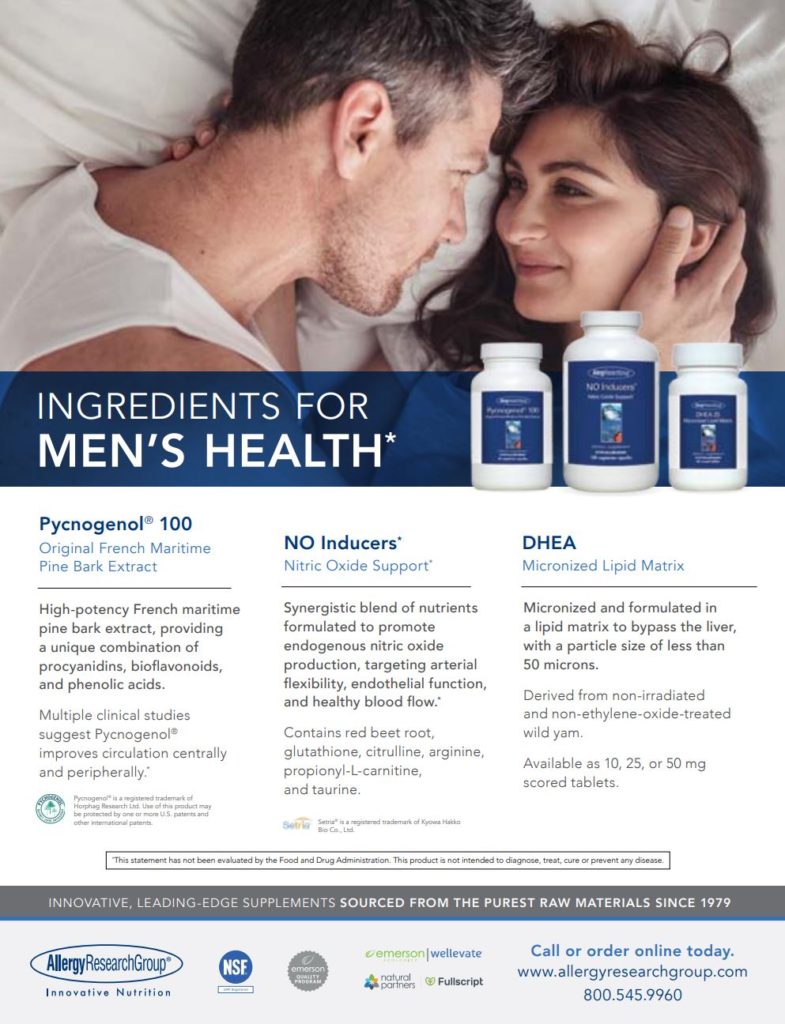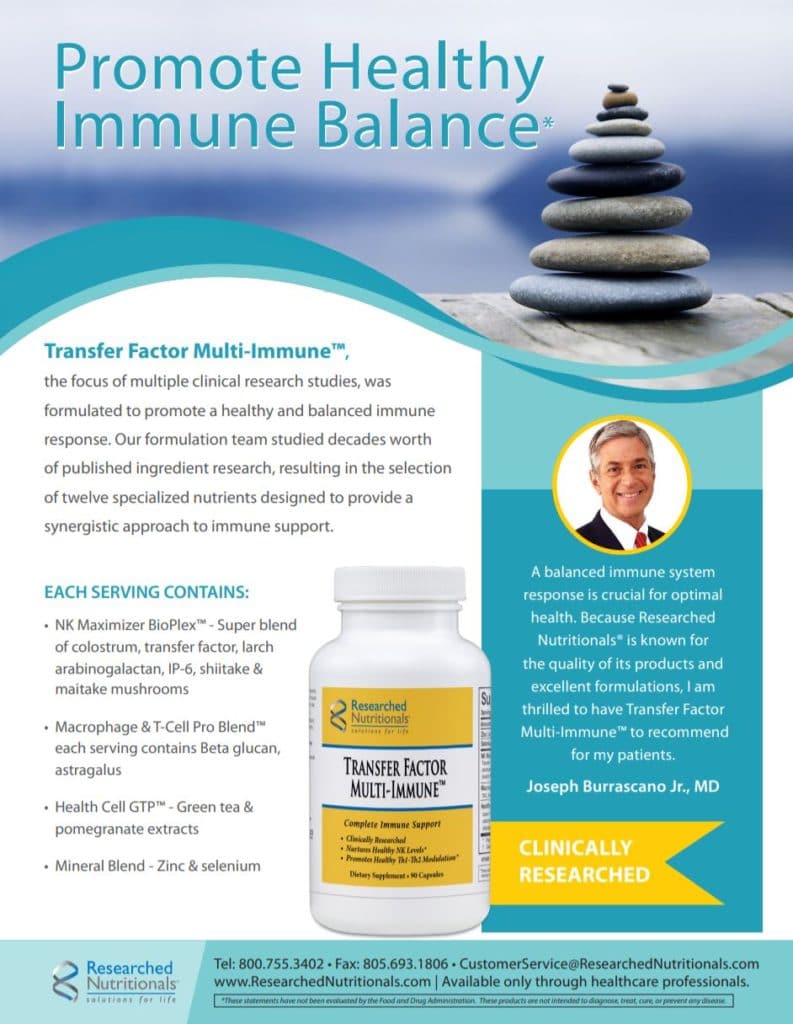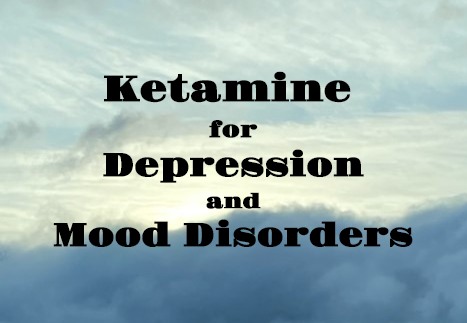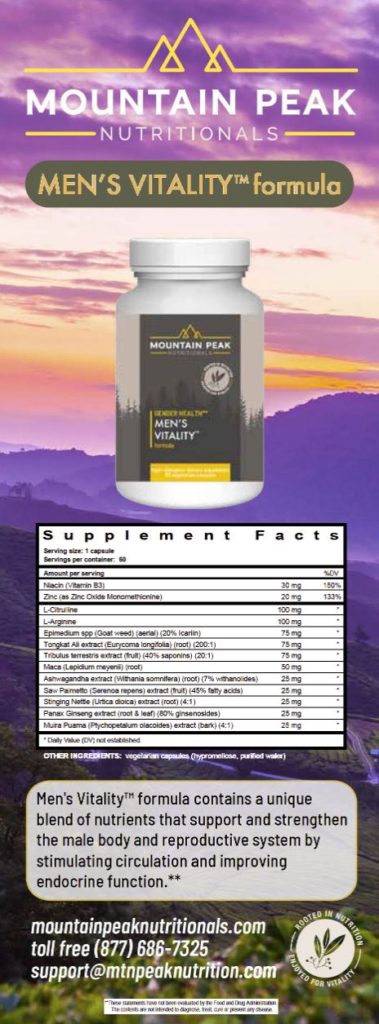The role of endothelial function on tumescence – and beyond
By Erica Zelfand, ND
The stories I hear of men* with erectile dysfunction (ED) are strikingly similar: The issue begins insidiously and is initially treated at a “low T clinic” with gradually increasing doses of exogenous testosterone in regimens that yield varied but ultimately insufficient results.
A review of the lab work of these individuals reveals that they are typically overdosed on their prescription hormones, with total testosterone levels often above 1000 ng/dL. While supraphysiological levels of testosterone do, in fact, enhance the sexual desire and performance of some men, they come with significant health risks and pesky side effects like anxiety, irritability, and insomnia. Other men, however, find that even high doses of anabolic steroids fail to engender desired outcomes in the bedroom.
Erectile dysfunction (ED, impotence) is a fairly common medical condition, characterized by the inability to achieve and maintain a penile erection firm enough for satisfying sexual intercourse.1 ED is also on the rise: While the condition affected an estimated 152 million males worldwide in 1995, that number is expected to swell (no pun intended) to over 320 million people by 2025.2,3
Just last week, a new patient shouted at his wit’s end, “I’m taking testosterone, HCG [human chorionic gonadotropin], and anastrozole. I’m lifting more weight than the other guys at the gym. I look amazing. I have tons of energy—so much I can’t fall asleep at night – but I after two years of playing with all my doses I still can’t get hard. What the heck is wrong with me!? What are my other doctors missing? I really hope you can figure it out.” [Note: This patient employed more expletives when expressing himself.]
Time and time again, I explain to exasperated fellows like this one that sex hormone levels are just one piece of the puzzle. The successful treatment of ED often also entails assessing the nervous system (including mental health), adrenal function, metabolic health, and endothelial integrity, with the latter being among the most overlooked aspects of sexual health.
Tumescence is a hemodynamic process characterized by enhanced penile arterial inflow and reduced venous outflow.4,5 Because the physiology of tumescence (penile erection) requires that the penis engorges with blood, the integrity of the vascular system—and ergo the status of nitric oxide production—is of utmost importance to male sexual performance and satisfaction.6
Nitric Oxide: The Endothelium Relaxer
Our understanding of nitric oxide (NO) is relatively new: In 1998 three American pharmacologists received the Nobel Prize for their discovery of NO’s effects as a signaling molecule within the cardiovascular system.7
This tiny gas molecule is produced in the blood vessels, nerves, and immune cells. Neuronal and endothelial NO causes relaxation of the surrounding smooth muscle, resulting in vasodilation.8,9 With regard to male sexual health, NO triggers the relaxation of the cavernous smooth muscle of the penis, allowing for engorgement and subsequent erection.
NO production declines with age, however, placing males at increased risk of ED as they grow older.10 It is now estimated that nearly half of men above the age of 40 have some degree of ED.11
Endothelial inflammation undermines NO production and is thus a significant determinant of ED and other vascular diseases.12 It is also a culprit that can effectively be treated with naturopathic medicine.
Erectile Dysfunction as Coronary Risk Marker
Due to the relatively small size of the penile vasculature (on even the most well-endowed of individuals), ED may be understood as a warning sign of poor vascular function and impending coronary artery disease (CAD).9,11,13,14 ED may present well before the observation of so much as an elevated blood pressure reading.15 If left unchecked, the vascular inflammation and dysfunction associated with many cases of ED may lead to ischemic heart disease;16 ED has thus been referred to as “penile angina.”17
ED is such a strong predictor of cardiovascular disease in men,3 in fact, that providers are now advised to assess the cardiovascular health of patients presenting with the condition.16 While not all men with ED have cardiovascular problems, a significant percentage of males with angiographically demonstrated CAD have been observed to have ED.13 ED was also shown in one study to precede CAD in a whopping 70% of male CAD patients.13
It is perhaps no surprise that ED and CAD go hand-in-hand, as they share many of the same risk factors, including sedentary lifestyle, obesity, diabetes, smoking, hypertension, dyslipidemia, metabolic syndrome, and declining NO activity.9,11,18,19
Conventional Treatments of ED
The first-line therapy for ED entails phosphodiesterase type 5 inhibitors (PDE5i) like sildenafil.20 Although these drugs do not directly increase NO, they do augment NO-mediated pathways.21
When PDE5i’s fail to improve symptoms, vacuum devices, intracavernous injections, and penile prosthesis implantation are considered second- and third-line therapies. Few patients are eager to try these interventions, however, which may not be too great of a tragedy, as none of these methods adequately addresses the underlying metabolic, neurological, hormonal, or endothelial aspects of ED.
Testosterone plays an important role in sexual function via several mechanisms, including the stimulation of NO release.22 As more and more males become afflicted with ED, the increasing number of “low T” clinics that have cropped up over the years now comprise a multi-billion dollar industry.23,24 Testosterone replacement therapy (TRT) does help many men with ED—though not all. In my experience and opinion, focusing on NO augmentation—either in lieu of or in addition to hormone prescription—may serve ED patients in both the short and long term.
*Please Note: The terms “man” and “male” as used within this article refer specifically to individuals who were born with a penis. I acknowledge and honor that not all men were born with this anatomy, and that not all penis-owners identify as male.








